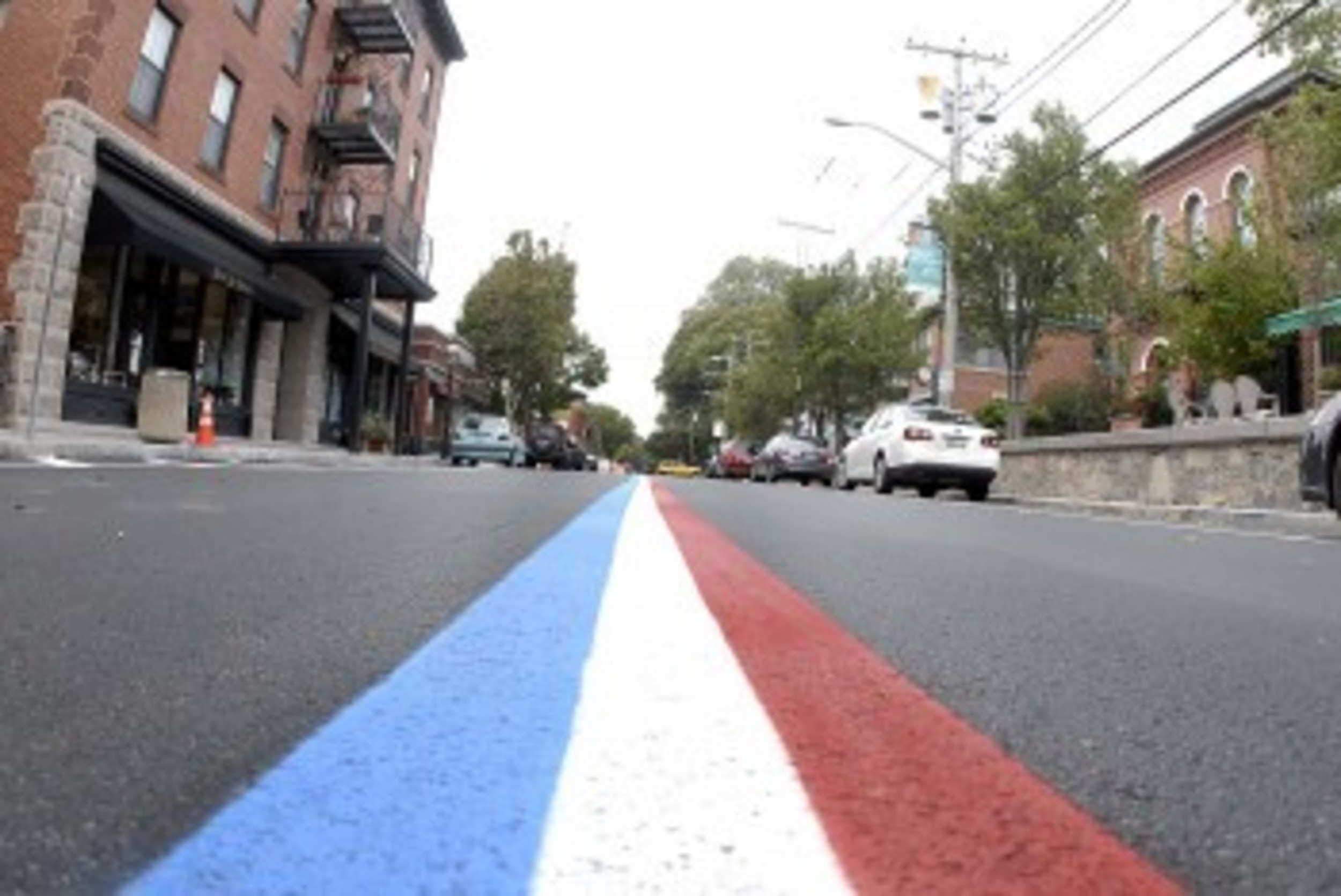Bristol loses nine crosswalks along Hope Street as part of project
A woman pushing her young child in a stroller stepped off the curb on Hope Street in front of Papa Joe’s Wrap Shack and scanned the ground quickly.
“Wasn’t there a crosswalk here?” she asked a nearby police officer who was helping …
This item is available in full to subscribers.
Please log in to continue |
Register to post eventsIf you'd like to post an event to our calendar, you can create a free account by clicking here. Note that free accounts do not have access to our subscriber-only content. |
Day pass subscribers
Are you a day pass subscriber who needs to log in? Click here to continue.
Bristol loses nine crosswalks along Hope Street as part of project
A woman pushing her young child in a stroller stepped off the curb on Hope Street in front of Papa Joe’s Wrap Shack and scanned the ground quickly.
“Wasn’t there a crosswalk here?” she asked a nearby police officer who was helping with a temporary traffic detour.
The question prompted the officer to study the fresh layer of asphalt underneath his feet. He recognized the newly painted crosswalk on the northern side of the intersection with Bradford Street and the lack of white lines on the southern side.
“Yeah. I thought there was one over here too,” he said.
He’s right. According to officials from the Rhode Island Department of Transportation, a total of nine crosswalks along the downtown portion on Hope Street were removed during the recent construction project.
Where there had once been 15 crosswalks, now only six remain.
There are crosswalks — leading across Hope Street — at Oliver, Franklin, Bradford, State, Constitution and Church. However, there are no signs of former crosswalks that carried pedestrians across the side roads bisecting Hope, as had previously been the case.
The reasons for the change are many, said DOT Chief Engineer Frank Corrao.
For starters, some of the crosswalks were eliminated because they would have impacted the historic nature of the downtown area.
Mr. Corrao said that in order to make the proper curbing installations for crosswalks at certain intersections, work crews would have had to remove some of the trees along Hope Street. Mr. Corrao said that would have negatively impacted the character of the downtown area.
“We had to work closely with the historic preservation group in Bristol, relative to the preservation of trees,” he said. “The group wanted the road to stay true to the character. ... We must comply with ADA (American Disabilities Act) laws, and in doing so there are certain requirements you must meet. ... At some of the intersections, trees would have needed to be removed.”
Safety also played a role in the decision to remove crosswalks, said Mr. Corrao.
He said that having more crosswalks is not necessarily safer for the pedestrians or the motorists. He said it’s harder for motorists to recognize all the crosswalks along a stretch of roadway. In the case of the Bristol’s downtown, there used to be crosswalks along both sides of an intersection, allowing pedestrians to cross Hope on the north side of the intersection and south side.
Mr. Corrao said now there are only single crosswalks installed at these same intersections, allowing motorists to better recognize pedestrians who are trying to cross the road.
“Having fewer crosswalks that a more visible ... is much safer than having an excessive number of crosswalks that rarely if ever have a pedestrian utilize it,” he said.
“The crosswalks are there to send the message to the pedestrian. These crosswalks make the pedestrians more visible. That’s a visual cue that a driver uses when deciding whether to stop for the pedestrian or not stop.”
Mr. Corrao said the removal of crosswalks had always been part of the Hope Street construction project.
“We went through an extensive study to take a look at pedestrian traffic out there ... to see where the majority of people are crossing, at different times of the day,” he said.
The DOT official said that some of the crosswalks that were removed had been added over the years and may have actually “created a false sense of security” for pedestrians.
An early response from the public about the eliminated crosswalks has been quiet. An employee of the U.S. Post Office on Hope Street said he hasn’t heard many, if any, people complaining about the change.
Marked and unmarked
In addition to the six well-marked crosswalks along Hope Street are a number of “unmarked crosswalks,” said Mr. Corrao. He said that an unmarked crosswalk is where a section of sidewalk continues from one side of the road to the other side after an intersection.
What’s the law?
So who exactly has the right-of-way when it comes to crossing the road in a crosswalk?
Mr. Corrao said he wasn’t an attorney, but his interpretation of the law led him to believe that a pedestrian needed to be at least 50 percent across a roadway in the crosswalk, for the car to be required to stop. Otherwise the car has the right to continue, he said.






